#White American Beautyberry
Explore tagged Tumblr posts
Text

Callicarpa americana 'Alba' / White American Beautyberry at the Sarah P. Duke Gardens at Duke University in Durham, NC
#Callicarpa americana 'Alba'#Callicarpa americana#Callicarpa#Lamiaceae#White American Beautyberry#American Beautyberry#Beautyberry#Native plants#Plants#Berries#Shrubs#Nature photography#photography#photographers on tumblr#Sarah P. Duke Gardens#Duke Gardens#Duke University#Durham#Durham NC#North Carolina#🌺🌻
4 notes
·
View notes
Text
Six on Saturday: Colorful but Inedible Berries
Snowberry is native here. I have been wanting to grow it because I like its white berries. I just found a seedling where it could not stay, so brought it back here. I am very pleased with it, but did not want to share pictures of it as scrawny canned bare twigs. I got these pictures instead. 1. Callicarpa americana, American beautyberry is what compelled me to get pictures of berries for this…

View On WordPress
0 notes
Text


✧・゚: *✧・゚:* 💀 Idia Birthday SSR flower analysis* 💀*:・゚✧*:・゚✧
*Mandatory reminder that I’m no flower specialist, which means these are all very subjective opinions. Take everything with a grain of salt!
Blue gerbera daisies are believed to lessen sorrows and stress, though generally they symbolize innocence, purity, cheerfulness and loyal love. (In Egypt they also represent devotion to the sun and a closeness to nature.)
Blue hydrangeas symbolize apology, regret and forgiveness. They’re typically given to people to make amends and communicate a want for forgiveness and regret. However, they can also stand for gratitude, understanding and abundance.
Glory-of-the-snow symbolizes hope.
The yellow flowers are either begonias which symbolize hope, friendship, or a kindness towards someone, or they are roses which represent friendship and love.
(White though they appear more of a blush yellow/slightly greenish in tone) clovers are not only a good luck charm but they’re believed to also be able to ward off evil spirits.
The red flowers look like cockscomb which symbolize affection and silliness and are often used in for bouquets siblings.
Callicarpa/American beautyberry represents dignity, preparation, wisdom, seriousness and mourning.
Naturally, these are my un-educated guesses, but feel free to let me know if I got anything wrong/what flowers I might’ve missed.
36 notes
·
View notes
Text


so cool! i was wandering around after class and found a white beautyberry! ive heard of them, but never seen one until today, so exciting. its the same species as the native purple american beautyberry, but it makes white berries instead of purple
its not wild, it was definitely a deliberate planting. unsure if you can find the white berry version in the wild
#idek if i was on my schools campus or if i wandered onto another schools campus at that point#no idea where the one ends and the other begins#i think i want to steal a cutting
8 notes
·
View notes
Text
Smoothie Ideas
It’s been a little while and since I posted one of these and I’ve been asked by exactly no one to post another, so here we are! If I had access to all of these and a good amount of space to work with as well as room in a freezer, and a good blender/food processor, this is what I would do. All plant parts in equal amounts. Plus plain yogurt and silky tofu for texture. And honey, maple syrup, and cane sugar for added sweetness. Also assume anything toxic or potentially toxic (elderberries and pokeberry, for example) are properly prepared (cooked, seeds removed, etc.).
Drupe smoothie
açaí
acerola
allspice
amla
avocado
barberries: Darwin’s Japanese Ottawa
beautyberry
black huckleberry
brambles: Allegheny blackberry American raspberry arctic raspberry black raspberry blue raspberry boysenberry Canadian blackberry cloudberry common dewberry dewberry glandstem blackberry golden raspberry leafy-bracted blackberry loganberry Ohelo berry olallieberry Pennsylvania blackberry purple-flowered raspberry red raspberry salmonberry setose blackberry sphagnum dewberry swamp dewberry tayberry thimbleberry trailing raspberry wineberry youngberry
buffaloberry
camu camu
cashew apple
coffee cherry
crowberry
cupuaçu
dates: Barhi medjool
dogwoods: bunchberry cornel gray Kousa red osier silky
elderberries: common red
false Solomon’s seals: Canada mayflower false Solomon’s seal starry false Solomon’s seal
gandaria
genip
ginsengs: American Asian dwarf
hackberries: common sugarberry
harar
jujubes: ber black honey red
kinnikinnick
linden berry
longan
loquat
lychee
mamey sapote
mangos: ataulfo carabao Hayden Maya Palmer
miracleberry
mombins: ambarella imbu purple
mulberries: black red white
nance
Oregon grapes: creeping holly-leaved
partridgeberry
peach palm
pechiche
peppercorn
porcelainberry
rambutan
rose apples: Java jamun Malay water
silverberry
snowberries: common coralberry western
stone fruits: apricot American plum Bing cherry black cherry Canada plum chokecherry damson donut peach Mirabelle nectarcot nectarine peach pin cherry plumcot Rainier cherry sand cherry sloe sour cherry sugarplum
sugar palm
viburnums: arrowwood highbush cranberry mapleleaf viburnum nannyberry snowball tree squashberry witch’s hobblebush witherod viburnum
white sapote
wintergreens: creeping snowberry salal teaberry
2 notes
·
View notes
Text
Foods for Mabon:

A Mabon feast is a time of giving recognition to the earth, showing gratitude, praising both light and dark, and celebrating abundance.
Through feasting with whatever we may have, we are able to represent this years bounty, draw in abundance for the upcoming winter, and show that we are thankful for what we currently have. Fall foods that represent the second harvest are typically appropriate so that we are able to celebrate and acknowledge the season.
Vegetables:
Corn
Carrots
Beans
Potatoes
Brussels Sprout
Beets
Parsnips
Pumpkin
Acorn Squash
Butternut Squash
Cauliflower
Broccoli
Onions
Eggplant
Tomatoes
Artichoke
Celery
Cucumber
Leeks
Kale
Peas
Peppers
Mushroom

Meats:
Tofu
Tempeh
Chicken
Turkey
Lamb
Duck
Goose
Rabbit
Salmon
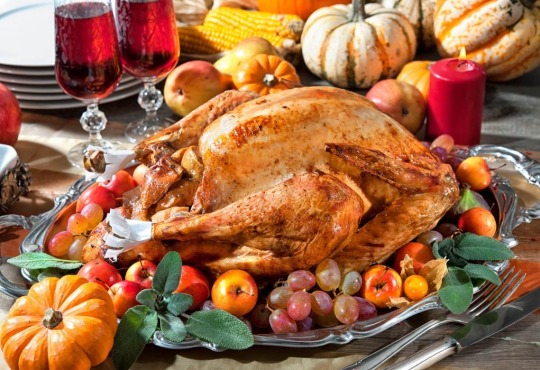
Fruits:
Pomegranate
Apricot
Fig
Pear
Apple
Plum
Melons
Peach
Grape
Orange
Persimmon
Olives
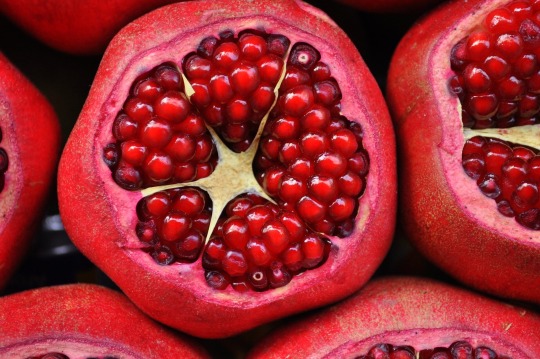
Berries:
Blackberry
Raspberry
Blueberry
Elderberry
Hawthorn
American Beautyberry
Cranberry
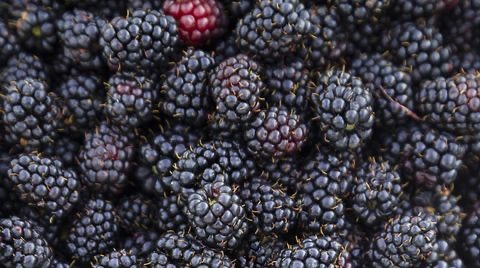
Herbs and Spices:
Cinnamon
Pumpkin Spice
Anise
Cloves
Rosemary
Sage
Chamomile
Rose Hips

Drinks:
Apple Cider
Wine
Grape Juice
Bourbon
Pumpkin Spice Latte
Cranberry Juice
Beer
Pomegranate Juice
Apple Juice
Mead
Chai
Tea
Sangria
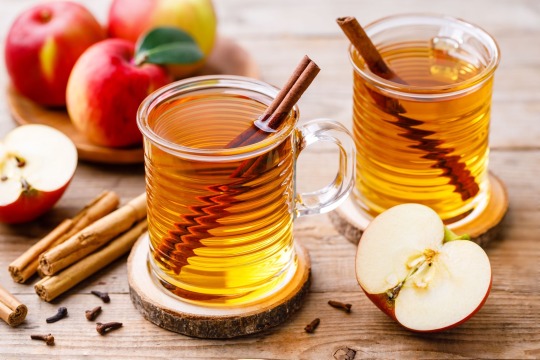
Misc.:
Bread
Nuts
Wheat
Dried Fruit
Cheese
Honey
Acorn
Seeds
Grains
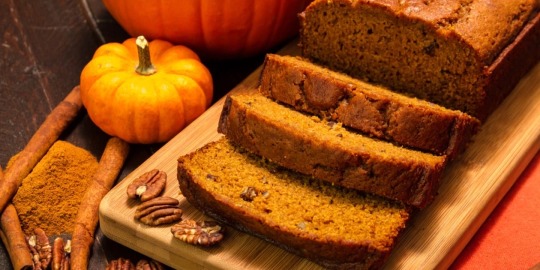
Recipes-
Drinks:
Blueberry & Apple Cider-
https://wishfarms.com/recipe/hot-fall-harvest-blueberry-apple-cider/?pp=1
Side Items:
Pumpkin Mashed Potatoes-
https://www.eatthis.com/pumpkin-potato-mash-recipe/
Caramalized Sweet Potato and Kale Fried Rice-
https://iowagirleats.com/caramelized-sweet-potato-kale-fried-wild-rice/
Pumpkin Cornbread-
https://www.spoonforkbacon.com/pumpkin-cornbread/
Sweet Potato Pomegranate Salad-
https://www.twopeasandtheirpod.com/sweet-potato-pomegranate-salad/?utm_medium=social&utm_source=pinterest&utm_campaign=tailwind_tribes&utm_content=tribes&utm_term=473602156_16644670_203092
Pomegranate Baked Brie-
https://www.thelifejolie.com/pomegranate-thyme-brie-appetizer/
Pomegranate Almond Cheese Ball-
https://www.howsweeteats.com/2013/12/pomegranate-jeweled-white-cheddar-toasted-almond-and-crispy-sage-cheeseball/
Entrees:
Balsamic and Pomegranate Chicken-
https://honestcooking.com/balsamic-pomegranate-chicken/
Roasted Vegan Mabon (Thanksgiving) Bowl-
https://www.ilovevegan.com/roasted-vegan-thanksgiving-bowl/
Rosemary and Orange Slow-Roasted Duck-
https://www.finecooking.com/recipe/rosemary-and-orange-slow-roasted-duck
Fall Sheet Pan Pork Tenderloin with Honey Balsamic Roasted Vegetables-
https://www.goodlifeeats.com/fall-sheet-pan-pork-tenderloin-with-honey-balsamic-roasted-vegetables/
Roasted Butternut Squash (Three Ways)-
https://www.feastingathome.com/stuffed-butternut-three-ways/
Tuscan White Bean Soup-
https://www.feastingathome.com/ribollita-recipe/
Butternut Lasagna with Mushrooms and Sage-
https://www.feastingathome.com/butternut-lasagna-with-mushrooms-and-sage/
Mushroom Wellington with Rosemary and Pecans-
https://www.feastingathome.com/mushroom-wellington-rosemary-pecans/
Fall Shepherds Pie-
https://www.tablespoon.com/recipes/fall-shepherds-pie/05a1a0e6-acc8-40e1-8072-69e70b0ce846
Autumn Chicken Dinner-
https://www.cookingclassy.com/one-pan-autumn-chicken-dinner/
Chicken & Leek Soup-
https://www.ravenandcrone.com/catalog/a16/Mabon,-Fall-Equinox-Food-Recipes/article_info.html
Cream of Tomato Soup-
https://www.ravenandcrone.com/catalog/a16/Mabon,-Fall-Equinox-Food-Recipes/article_info.html
Acorn Squash and Apple Soup-
https://www.ravenandcrone.com/catalog/a16/Mabon,-Fall-Equinox-Food-Recipes/article_info.html
Stuffed Acorn Squash-
https://www.ravenandcrone.com/catalog/a16/Mabon,-Fall-Equinox-Food-Recipes/article_info.html
Harvest Ratatouille-
https://www.ravenandcrone.com/catalog/a16/Mabon,-Fall-Equinox-Food-Recipes/article_info.html
Roast Fillet of Beef-
https://www.ravenandcrone.com/catalog/a16/Mabon,-Fall-Equinox-Food-Recipes/article_info.html
Pumpkin Beef Stew-
https://www.honeyandbirch.com/pumpkin-beef-stew-recipe/
Roasted Stuffed Pumpkin-
http://tiphero.com/roasted-stuffed-pumpkin/?utm_content=bufferb6d43&utm_medium=social&utm_source=pinterest.com&utm_campaign=buffer
Vegan Turkey-
https://www.vegankitchenmagick.com/the-best-vegan-gluten-free-turkey-or-chickn/
Beef Barley Vegetable Soup-
https://www.justapinch.com/recipes/soup/beef-soup/mabon-beef-barley-veggie-soup.html
Acorn Squash and Carrot Soup-
https://www.saltandlavender.com/acorn-squash-and-carrot-soup/
Pumpkin Chili-
https://www.willcookforsmiles.com/pumpkin-chili/
Spicy Pumpkin Soup-
https://www.chilipeppermadness.com/recipes/spicy-pumpkin-soup/
Tuscan Pumpkin Pasta Sauce-
https://detoxinista.com/vegan-tuscan-pumpkin-pasta-sauce/
Harvest Stew with Smoked Sausage-
https://thecozyapron.com/harvest-stew-with-smoked-sausage/
Pomegranate Glazed Salmon-
https://www.primaverakitchen.com/4-ingredient-pomegranate-glazed-salmon/
Roasted Pumpkin Caramelized Onion Walnut Pizza-
http://tohercore.com/roast-pumpkin-caramelized-onion-walnut-pizza/
Dessert:
Apple Cinnamon Roll Cupcakes-
https://omgchocolatedesserts.com/apple-cinnamon-roll-cupcakes/
Apple Spice Cake-
https://www.justsotasty.com/apple-spice-cake-cream-cheese-frosting/
Fig Bread Pudding-
http://userealbutter.com/2019/10/07/fig-bread-pudding-recipe/
Pumpkin Oatmeal Cookies-
https://www.ravenandcrone.com/catalog/a16/Mabon,-Fall-Equinox-Food-Recipes/article_info.html
Cinnamon Baked Peaches-
https://simplyshellie.com/cinnamon-baked-peaches-recipe
Vegan Pumpkin Pie-
https://itdoesnttastelikechicken.com/easy-vegan-pumpkin-pie/
Fresh Apple Pound Cake-
https://www.ravenandcrone.com/catalog/a16/Mabon,-Fall-Equinox-Food-Recipes/article_info.html
Chocolate Pumpkin Cupcakes With Cinnamon Pumpkin Cream Cheese Icing-
https://therecipecritic.com/chocolate-pumpkin-cupcakes-with-cinnamon-pumpkin-cream-cheese-frosting/
Pumpkin Chocolate Chip Cookies-
https://witchoflupinehollow.com/2017/09/09/pumpkin-chocolate-chip-cookies-recipe/
Pumpkin Chai Cake-
https://www.halfbakedharvest.com/chai-pumpkin-cake/
Carrot Honey Cake-
https://www.ravenandcrone.com/catalog/a16/Mabon,-Fall-Equinox-Food-Recipes/article_info.html
Pumpkin Apple Muffins-
https://www.ravenandcrone.com/catalog/a16/Mabon,-Fall-Equinox-Food-Recipes/article_info.html
#witchcraft#witchblr#mabon#food#cottage witchcraft#pagan witch#cottage witch#kitchen witchcraft#baby witch#green witch#kitchen witch#witch#witches#beginner witchcraft#eclectic witch#gay witch#beginner witch#witchy food#wicca#traditional wicca#wiccablr#pagan wicca#wiccan#wicca recipes#mabon altar#mabon 2020#maboniscoming#sabbats
38 notes
·
View notes
Photo

American Beautyberry
Callicarpa americana
This attractive shrub is, to many people’s surprise, native to the southern US and bears thick clusters of shimmering magenta-purple fruits which are attractive to many birds, especially the Northern Bobwhite. Its hairy leaves are a favourite of the White-tailed Deer, and recent studies indicate they may be strongly repellant to mosquitoes, fire ants, and ticks due to the presence of callicarpinal (but their toxicity has not yet been studied-- don’t crush leaves on the skin, but on the outside of one’s clothes).
Beautyberries are edible when fully ripe (late summer to early fall) but are highly astringent and should not be eaten in great quantities lest they cause stomach upset. ForagingTexas has a great recipe for a beautyberry jelly:
Combine 1.5 quarts of berries with one quart water and boil 20 minutes, then strain out the solids. Add 4.5 cups of sugar and one envelope Sure-Jell, bringing the mixture back to a boil for two minutes. Skim off any foam. Pour hot jelly into sterilized jars and seal.
The Alabama used a decoction of roots and branches in the sweatbath for rheumatism and malarial fever. The Choctaw took a decoction of the roots for dysentery and for dizziness, and a decoction of the roots and berries for colic. The Koasati made a decoction of the roots for stomachache. The Seminole made a decoction of the root bark for urine retention and used the roots or stem bark for itchy skin.
I associate the beautyberry with (shocker) the goddess of beauty, Venus, the astrological sign Scorpio, the Sun, and the element Water. A tea of the berries may be used (topically) for glamours and the leaves may be added to charms to keep away pests.
11 notes
·
View notes
Photo

Purple Beautyberry cluster is drying by jungle mama Brilliant purple clusters! Birds love them. Moths and butterflies love them. And so do ants. They make a delightful jam too. The American Beautyberry is a shrub, 6-9 feet in height. Shoot growth occurs throughout much of the season. It is characterized by its attractive foliage and clusters of flowers or fruit around the leaf nodes. Leaves are simple, opposite or subopposite, and deciduous. The leaves are 3-5 inches long, 1-3 inches wide, oval-shaped, with an acute apex. Leaf bases are tapered. Leaf margins are serrate. Leaf surfaces are green and usually glabrous above, paler and pubescent below. Petioles are short and slender. The flowers are perfect and in sessile clusters around the leaf nodes. Fruit is a 4-pitted lavender-pink, magenta, or violet drupe, about 1/4 inch in diameter. The fruit lasts long into winter and is eaten by a variety of birds. American Beautyberry is a food plant used by the larvae of many species of butterflies and moths making is a wonderful butterfly garden plant. Birds including robins, catbirds, cardinals, mockingbirds, brown thrashers, finches and towhees are favorite consumers of both the fresh berries and the shriveled ones in later winter. The fruit is also a favorite of white tailed deer and they will forage on it well into the winter months as well. American beautyberry (Callicarpa americana) Also called French mulberry. Biscayne Park, FL www.susanfordcollins.com https://flic.kr/p/2iVHmEE
0 notes
Text
MASTER PLANT LIST
Acer griseum Paperbark Maple
Acer rubrum Red Maple
Acer palmatum Japanese Maple
Aesculus parviflora Bottlebrush Buckeye
Agave tequilana Blue Agave
Ailanthus altissima Tree of Heaven
Albizia julibrissin Mimosa
Araucaria heterophylla Norfolk Island Pine
Asparagus densiflorus Asparagus Fern
Averrhoa carambola Starfruit
Berberis aquifolium Holly-Leaved Bayberry
Betula populifolia Grey Birch
Callicarpa dichotoma Purple Beautyberry
Carya galbra Pignut Hickory
Carya laciniosa Shellbark Hickory
Carya myristiciformis Nutmeg Hickory
Carya ovata Shagbark Hickory
Cercidiphyllum japonicum Katsura Tree
Cinnamomum zeylanicum Ceylon Cinnamon
Clethra alnifolia Summersweet
Coffea arabica Arabian Coffeetree
Comptonia peregrina Sweet Fern
Cornus alternifolia Pagoda Dogwood
Cupressus arizonica Arizona Cypress
Dionaea muscipula Venus Flytrap
Fagus grandifolia American Beech
Hydrangea anomala subsp. petiolaris Climbing Hydrangea
Juniperus rigida Needle Juniper
Juniperus squamata ’Meyeri’ Singleseed Juniper
Juniperus virginiana Eastern Red Cedar
Liriope muscari Lilyturf
Liquidambar acalycina Sweetgum
Metasequoia glyptostroboides Dawn Redwood
Musa acuminata Banana Tree
Myrica pensylvanica Northern Bayberry
Nipponanthemum nipponicum Montauk Daisy
Parrotia persica Persian Ironwood
Pennisetum alopecuroides Miniature Fountain Grass
Picea abies Norway Spruce
Picea orientalis Oriental Spruce
Pinus bungeana Lacebark Pine
Pinus echinata Shortleaf Pine
Pinus flexilis Limber Pine
Pinus ponderosa Sugar Pine
Pinus pungens Table Mountain Pine
Pinus rigida Pitch Pine
Pinus strobus Eastern White Pine
Pinus thunbergii Japanese Black Pine
Plumeria rubra Frangipani Tree
Prunus maackii Amur Chokecherry
Prunus serotina Black Cherry
Quercus Macrocarpa Burr Oak
Rhus aromatica Fragrant Sumac
Rhus typhina Staghorn Sumac
Rosmarinus officinalis Rosemary
Sarracenia flava North American Pitcher Plant
Schefflera actinophylla Umbrella Tree
Stachys byzantina Lamb’s Ear
Taxus baccata English Yew
Taxus cuspidata ‘Capitata’ Japanese Yew
Thuja plicata Western Red Cedar
Tilia americana American Linden
Tsuga canadensis Canadian Hemlock
Tsuga caroliniana Carolina Hemlock
Zelkova serrata Sawleaf Zelkova
1 note
·
View note
Text
14 October through 3 November 2019
I didn’t realise how long it had been since my last update. Well, I was in France and Italy last week. In France I paid a long overdue visit to Matt and Will near Limoges. We had a very nice few days together, doing some autumn chores; I met Will’s parents who moved to a nearby village earlier this year, escaping Brexit (which didn’t happen - again - on Halloween); visiting a château; and playing lots of cards.
I flew back to Stansted where I checked into the Holiday Inn Express and awaited Ginny who arrived later that evening. I passed the afternoon reading American Eden for book club. I really enjoyed the book. We watched the Great British Bake Off final then early to bed. We flew to Perugia for our annual visit to Casa Luciano.
This year was quite different than years past - part due to there being no olives to harvest due to a very bad spring when all the flowers were knocked off in heavy rain and freezing weather - and several new people were invited, so we enjoyed hikes, games, getting to know each other, and a Halloween costume party more than doing outdoor work. Thursday and Friday we managed to prune all the trees in front of the house. Elizabeth and Rob purchased all the surrounding land this year so we also did a bit of exploring of the newly acquired property.
I missed the annual comradery of everyone pruning, harvesting, clearing and the ensuing bonfire. There was a lot of rain, so we didn’t even manage to burn what little we did prune. Of course we all ate very well and imbibed delicious wines.
In the weeks since my previous update, we have been focused on winter protection and the Index Seminum. I’m sure there is more winter protection waiting for me. The Friday before I departed for Limoges, Elizabeth, Alessia and Paul visited the garden then we all went to lunch at Maze Grill down the street.
I’ve been working on getting the seeds for Index Seminum on Iris and I hope this makes producing this year’s catalogue faster. I’m meeting with Robert tomorrow.
Plant ident on sages by Nell and Allison:
Lamiaceae Salvia canariensis
Lamiaceae Salvia confertiflora
Lamiaceae Salvia discolor
Lamiaceae Salvia haenkei 'Prawn Chorus'
Lamiaceae Salvia involucrata
Lamiaceae Salvia leucantha
Lamiaceae Salvia officinalis
Lamiaceae Salvia ‘Phyllis’ Fancy’
Lamiaceae Salvia regla
Lamiaceae Salvia uliginosa
Plant ident on fragrant plants by intern Valentina:
Asteraceae Helichrysum italicum
Cannabaceae Cannabis sativa
Ginkgoaceae Ginkgo biloba
Lamiaceae Lavandula x christiana
Lamiaceae Salvia 'Phyllis' Fancy'
Onagraceae Oenothera stricta
Rosaceae Filipendula ulmaria
Rosaceae Rosa rugosa 'Frau Dagmar Hastrup'
Solanaceae Brunfelsia pauciflora
Solanaceae Nicotiana sylvestris
Plant of the week
Lamiaceae Callicarpa japonica Thunb.

common name(s) - East Asian beautyberry, Japanese beautyberry; Japanese Murasakishikibu synonym(s) - Amictonis japonica (Thunb.) Raf.; Callicarpa caudatifolia Koidz.; C. japonica f. albibaccata H.Hara; C. japonica f. albiflos Konta; C. japonica f. angustifolia Miq.; C. japonica var. japonica; C. japonica f. taquetii (H.Lév.) Ohwi; C. mimurazakii Hassk. [Invalid]; C. murasakii Siebold [Invalid]; C. taquetii H.Lév. conservation rating - none native to - China, Japan, Korea, Ryukyu Islands, Taiwan location - embankment west, accession _____ leaves - simple, opposite flowers - can range from pink to white in late summer; producing purple drupes in autumn habit - small, rounded, deciduous shrub to 2m tall and wide with slender, upright branches habitat - no information found pests - generally pest-free disease - leaf spot; black mould hardiness - to -10ºC (H4) soil - well-drained moist soil sun - full sun to light shade propagation - seed; semi-ripe or hard-wood cuttings pruning - flowers and fruits on the current season's growth and so any pruning is best done whilst the plant is dormant nomenclature - Lamiaceae - gullet, the name in Pliny refers to the gaping mouth of the corolla; Callicarpa - callos (beauty), carpos (fruit); japonica - from Japan or Japanese NB - fruits are not edible for humans, but provide food for birds and deer; leaves can be used to make herbal tea; essential oils are the most common use for the plant, though not for aromatherapy, oils, which contain at least 67 different compounds, have been found to be useful for repelling insects like ants and mosquitoes.
References, bibliography:
Gardenia [online] https://www.gardenia.net/plant/Callicarpa-Japonica-Japanese-Beautyberry [4 Nov 19]
Gledhill, David, (2008) “The Names of Plants”, fourth edition; Cambridge University Press; ISBN: 978-0-52168-553-5
IUCN [online] http://www.iucnredlist.org/search [4 Nov 19]
Plant List, The [online] http://www.theplantlist.org/tpl1.1/record/kew-30810 [4 Nov 19]
Plants for a Future [online] https://pfaf.org/User/Plant.aspx?LatinName=Callicarpa+japonica [4 Nov 19]
Superfoodly [online] https://www.superfoodly.com/beautyberry/ [4 Nov 19]
Useful Temperate Plants [online] http://temperate.theferns.info/plant/Callicarpa+japonica [4 Nov 19]
Wikipedia [online] https://en.wikipedia.org/wiki/Callicarpa_japonica [4 Nov 19]
Ibid https://en.wikipedia.org/wiki/Callicarpa [4 Nov 19]
Plant of the week
Plantaginaceae Lophospermum erubescens D.Don

common name(s) - creeping gloxinia, Mexican twist synonym(s) - Asarina erubescens (D. Don) Pennell; A. lophospermum (L. H. Bailey) Pennell; A. purpusii (T. S. Brandeg.) Pennell; Besleria scandens Sesse & Mocino ex D. Don; Lophospermum chiapense W. J. Elisens; L. purpusii (T. S. Brandeg.) Rothm.; L. scandens D. Don; L. spectabile Hort. ex Vilmorin’s; L. turneri W. J. Elisens; Maurandya erubescens (Don) A. Gray; M. erubescens var. glabrata I. M. Johnston; M. erubescens var. purpusii (T. S. Brandeg.) I. M. Johnston; M. glabrata (I. M. Johnston) Ramirez; M. lophospermum L. H. Bailey; M. purpusii T. S. Brandeg.; M. scandens (D. Don) A. Gray; M. scandens var. erubescens (D. Don) A. Voss; M. scandens var. glabrior A. Voss; M. scandens var. spectabilis A. Voss conservation rating - none native to - Mexico location - dicotyledon order beds, accession 2019-0280 leaves - twining leaf-stalks (petioles rather than tendrils or twining stems), triangular leaves flowers - solitary, trumpet-shaped rose-pink flowers to 70mm long, summer and autumn habit - climbing evergreen perennial (usually grown as an annual in the UK) habitat - in the margins of seasonally dry Quercus or Quercus-Liquidambar forests, including forest edges created by roads, or on canyon walls at elevations between 1,000m and 2,200m pests - generally pest-free disease - generally disease-free hardiness - to 1ºC (H2) (it will survive if its base and roots are protected from freezing in the winter) soil - moist and well-drained, moderately fertile sand or loam sun - full sun propagation - seed sown at 19ºC to 24ºC in early spring pruning - cut back after flowering nomenclature - Plantaginaceae - plantago - foot-sole-like, feminine termination of planta (ancient Latin, plantaginem, for the way the leaves of some lie flat on the ground) cognate with the French derivative, plantain; Lophospermum - crested-seed; erubescens - shamed, blushing, turning red, erubesco, erubescere, erubescui NB - has been cultivated as an ornamental plant since at least 1830; Lophospermum erubescens has been confused with Lophospermum scandens, partly because the earliest illustration of L. erubescens was labelled as L. scandens. Among other differences, L. erubescens has a more climbing habit than L. scandens, with many twining leaf stalks; also the sepals are broader and joined at the base for only 2–3 mm rather than 7–11 mm.
References, bibliography:
Catalogue of Life [online] http://www.catalogueoflife.org/col/details/species/id/df4b1711c48c990e104c630b9975ee88 [13 Nov 19]
Gledhill, David, (2008) “The Names of Plants”, fourth edition; Cambridge University Press; ISBN: 978-0-52168-553-5
IUCN [online] http://www.iucnredlist.org/search [13 Nov 19]
Plant List, The [online] http://www.theplantlist.org/tpl1.1/record/kew-2498793 [13 Nov 19]
Plants of the World online [online] http://plantsoftheworldonline.org/taxon/urn:lsid:ipni.org:names:279831-2 [13 Nov 19]
Royal Horticultural Society [online] https://www.rhs.org.uk/Plants/44861/i-Lophospermum-erubescens-i/Details [13 Nov 19]
Wikipedia [online] https://en.wikipedia.org/wiki/Lophospermum_erubescens [13 Nov 19]
Plant of the week
Lamiacaeae Plectranthus zuluensis T.Cooke

common name(s) - Zulu spurflower synonym(s) - none conservation rating - none native to - South Africa, Swaziland location - tropical corridor, accession 2018-0472 leaves - ovate, coarsely-toothed, textured, lime-green flowers - spikes of blue to pale mauve, tubular, spurred flowers are borne on dark purple stems above the foliage from late spring into summer habit - erect or sprawling, much-branched, four-angled, hairy stems, evergreen, frost-tender, plant to 1m tall and wide habitat - summer rainfall areas that experience little or no frost; often common along stream banks and deep river gorges pests - generally pest-free disease - generally disease-free hardiness - to 1ºC (H2) soil - fertile, well-drained loam or sand sun - part to full shade, sheltered propagation - seed or by cuttings taken in summer pruning - deadhead spent racemes to promote flowering; trim back after flowering or in spring to promote bushy growth nomenclature - Lamiacaeae - gullet, the name in Pliny refers to the gaping mouth of the corolla; Plectranthus - spurred-flower; zuluensis - from Zululand NB - characteristic pungent smell when crushed; once established, plants need little watering; feed with 2:3:2 every three months in summer to keep plants healthy.
References, bibliography:
Gledhill, David, (2008) “The Names of Plants”, fourth edition; Cambridge University Press; ISBN: 978-0-52168-553-5
IUCN [online] http://www.iucnredlist.org/search [13 Nov 19]
Plant List, The [online] http://www.theplantlist.org/tpl1.1/record/kew-158614 [13 Nov 19]
Plants of the World [online] http://plantsoftheworldonline.org/taxon/urn:lsid:ipni.org:names:454800-1 [13 Nov 19]
Royal Horticultural Society [online] https://www.rhs.org.uk/Plants/105029/Plectranthus-zuluensis/Details [13 Nov 19]
SANBI [online] http://pza.sanbi.org/plectranthus-zuluensis [13 Nov 19]
0 notes
Text
8 Native Plants to Deltona, FL Perfect for Your Landscape
The Sunshine State is known for its favorable weather. You’ll find plants that naturally thrive here both in gardens and forests. These plants are good for the environment since they require less water. They also help to attract and feed pollinators in the area. Native plants need much less maintenance which is a selling point for Florida gardeners. Check out these eight native plants to Deltona, FL perfect for your yard or landscape.
Tickseed
Don’t let the name fool you. Tickseed is a bright flower that’s well known for its ability to spring up anywhere in Florida. The small blooms can be either yellow, white, purple, or pink and are easy to spot. The plant gets its name from its small tick-shaped seeds that seem to catch on passerby animals making it easy to spread to other areas. There are a few different variations of Tickseed, both annuals, and perennials. Plant them in a spot near a window or outdoor living space to watch the birds and butterflies visit.
Milkweed
Well known as an essential part of the butterfly habitat, Milkweed is native to Florida with 24 species to choose from. This plant offers beautiful and vibrant blooms that appear during the spring and summer seasons. You’ll find milkweed will attract all kinds of pollinators including hummingbirds, bees, and butterflies.
Beautyberry
Also known as American Mulberry, the beautyberry is a Floridian native that offers stunning purple berries that attract a wide range of area birds. Beautyberry is a small native shrub that can reach up to 8 feet tall at maturity. Some Deltona gardeners choose to prune the plant to keep it more compact. It’s best planted in the garden as a border or as a privacy plant. Beautyberry will bloom pale pink flowers during the spring and summer which will turn into beautiful purple berries by early fall. The berries densely line the stems of the plant making this native specimen an easy choice to add extra color to the garden.
Southern Magnolia
We can’t make a list about the top Deltona plants without mentioning the southern magnolia. This Florida staple is well known for its ability to grow impressively large while also offering rich white blooms that are perfect for Florida’s climate. South Magnolias are a tried and true tree variety that does well in a garden with plenty of space. Some smaller cultivars are available as well to make sure that you don’t have future growth problems with roots and branches.
Firebush
This native shrub is popular among birds and butterflies given their bright red blooms that can last many months. Firebush is a woody shrub known for its ability to withstand almost any ailment. This easy plant can grow in a wide range of soil conditions and is best used in a mixed border or as a hedge.
Muhly Grass
Muhly grass is an ornamental grass that’s easy to grow and offers fall interest to your garden. It offers soft purple plumes that can grow up to 5 feet tall in the fall. You’ll find this grass naturally among coastal uplands and pine flatwood areas in the state, but many residents are choosing to use this stunning plant in cultivated gardens as well.
Swamp Lily
Also known as String Lily, this plant is a delicate native flower that enjoys humid and wet conditions. Swamp lily is a natural choice for Deltona residents given the many surrounding lakes and water features in the area. This plant will grow 2-3 feet tall and blooms thin petaled droopy flowers that produce a pleasant fragrance. Plant this water-loving flower in a very wet spot that sometimes floods or is too wet for other native species.
Railroad Vine
Open bare spots in the garden can be easily covered by planting native railroad vine. This low-growing groundcover will put out runners and quickly fill in those empty spots. Railroad vine does well in the Deltona climate given its ability to handle the salty air near the ocean. This plant can get out of hand because of its tenacity to spread, so make sure to plant it in a large enough area or prune it to size. The Railroad Vine offers pink flowers that are trumpet-shaped making it an interesting addition to any garden as well.
Consider any of these eight native plants for your Deltona garden to add beauty to your yard. Need additional help? Visit our Deltona lawn care page for more info!
The post 8 Native Plants to Deltona, FL Perfect for Your Landscape appeared first on Lawnstarter.
from Gardening Resource https://www.lawnstarter.com/blog/florida/deltona-fl/8-native-plants-to-deltona-fl-perfect-for-your-landscape/
0 notes
Photo

Beautyberry - American #beautyberry #shrubs (Callicarpa americana, USDA zones 7-11) bloom in late summer, and although the #flowers aren’t much to look at, the jewel-like, purple or white #berries are dazzling. In fact, the common name of #beautyberries derives from the genus #Callicarpa, meaning beautiful #fruit. The fall #foliage is attractive too, becoming a yellow or chartreuse color.
0 notes
Text
Plant a Winter Garden
Scented plants and bushes with lavishly hued berries and leaves keep a garden looking alive and fascinating amid the long winter months. The magnificence of developing admirably picked plants as of now of year is that you can cut crisp stems and sprigs from the plants to finish and fragrance your home.
Scented Plants:
• Oregon grapeholly is an upright, evergreen bush with dull green, strongly toothed leaves that hand purplish over winter. In winter to early spring, contingent upon the cultivating zone, it has spikes of fragrant yellow blooms with an aroma like lily-of-the-valley.
• Chinese witch hazel is a deciduous bush with amazingly fragrant groups of substantial, brilliant yellow blossoms on its uncovered branches in mid-and late winter.
• Viburnum is another deciduous, upright bush with dark blue leaves in summer that hand ruddy over fall. In spring it has various, thickly stuffed groups of expansive, sweetly fragrant rose, pink or become flushed white blooms, contingent upon species.
• The little, rugged, evergreen Christmas sweetbox (Sarcococca) has long, slim, dull green leaves, small nectar scented, white winter blooms and dark berries in spring.
Plants With Berries:
• The deciduous beautyberry has little however striking bunches of violet berries with bronze-purple foliage in fall.
• Single-blooming Rugosa cross breed roses bear vast, stout, orange hips in winter.
• Chilean wintergreen otherwise known as thorny heath (Gaultheria mucronata) 'Wintertime', an evergreen, female bush, must be developed in bunches with Chilean wintergreen "Thymifolia" to develop its round white winter berries.
• The evergreen American holly has sparkling dull green leaves and bears loads of appealing red berries.
Knobs to Plant:
• Allium knobs create enormous umbels of lilac-purple, star-molded blossoms around 12 inches high in spring or summer, contingent upon assortment. Once the shading has vanished, in mellow atmospheres, they keep their structure through winter, turning practically gleaming. Plant allium knobs in fall, around three inches profound. They will develop anyplace, in any dirt, however favor full sun.
• Tough cyclamen (not the same as the flower vendor cyclamen, which is slaughtered by ice) has fuschia-pink blossoms and dynamically designed silver and green takes off. It blooms in early spring, summer or fall, contingent upon assortment. Plant globules around two inches somewhere down in incomplete shade.
• Gladwin iris (stinking iris) produces alluring cases of red seeds, which open in fall and re-primary all winter. It grows 30 inches high and preferences sun or shade and sodden or dry conditions. Plant knobs around two inches profound.
• Snowdrop is an incredible, nectar scented assortment with pendant white blossoms that sprout in late winter. Plant the globules two inches somewhere down in sun or fractional shade in clammy soil that doesn't dry out in summer.
0 notes